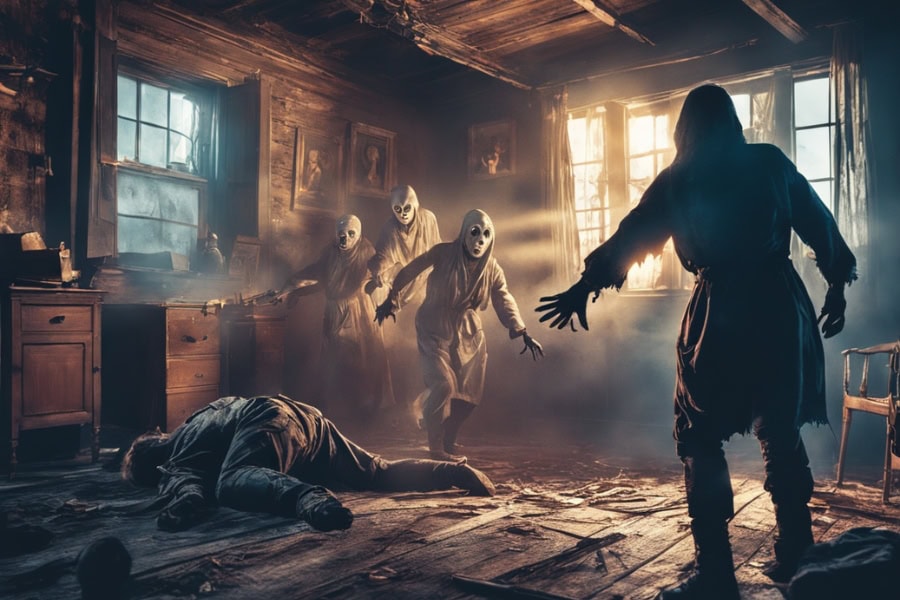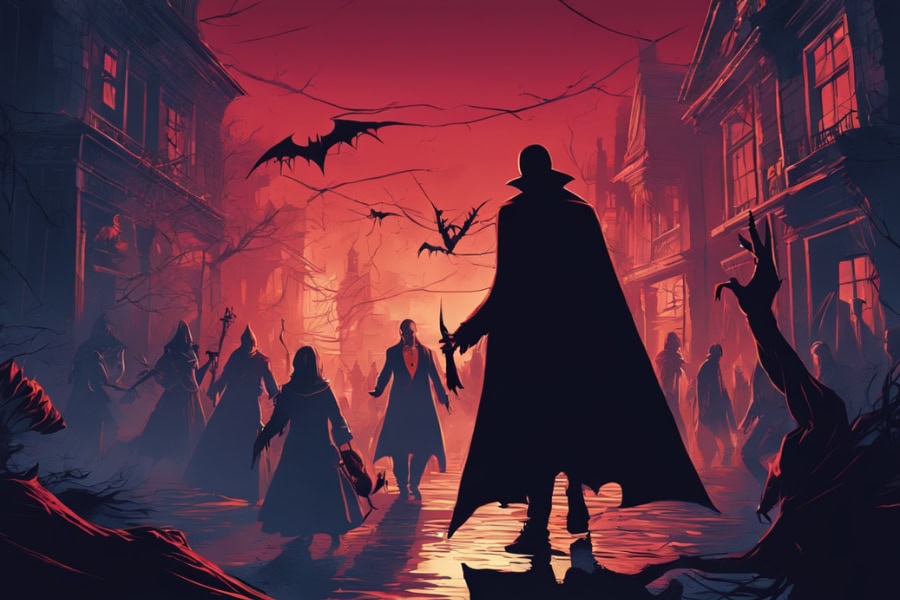5 Tips on Writing: With Barbara Kciuk
Hi, I’m Barbara, a senior narrative designer with nearly 8 years of experience in the games industry. Interactive storytelling has always been a huge passion of mine – so much so that I earned a bachelor’s degree in game studies and now share my love for game design as a university lecturer.
When it comes to my artistic interests, I’m primarily interested in the impact of stories on players and players on stories. This unique and inherent possibility can only be fully realized in video games, which is why this medium will be the focus of my post.
I hope to share with you my perspective as a narrative designer. My intention is to present a more technical side of writing, to show that there’s a method to this madness. A well-crafted story can serve as a tool that brings all the elements together, enhancing not only the narrative qualities of a game but the entire experience.
Hooking Your Audience
Questions, contrasts and paradoxes. Our brains likes to be teased and challenged, so doing just that, especially early on, helps to keep the audience engaged. When they knows that something about your story, characters or the world isn’t quite as it seems, it keeps the cogs in their brains constantly turning.
So even if mystery isn’t the heart of your story, this is a great way to guide your audience through the early parts, which are often a bit slower due to their expository and tutorial-y nature. And once they’re in, they’re in.
Mastering Plot Development
When working on commercial projects, writing is equal parts artistry and craftsmanship. The latter often gets overlooked by aspiring game writers and narrative designers who have a more romantic view of the job. In game writing, you don’t have total freedom; you’re constrained by numerous factors, from small ones like character limits to major ones like budget. Unlike personal projects, you likely won’t have the time or space to explore completely new avenues of expression. Moreover, you can’t just hope your writing will find its audience once it’s released – you need to create with a specific audience in mind.
That’s why it’s often better to treat plot development like a puzzle. While all stories stem from our imagination, their creation shouldn’t stop there. Once you are done with the initial idea, dive into the technical details of your story: dissect it, break it down into small chunks, identify all the arcs, and name all the tropes. Then, analyze which parts support each other and which don’t. Make your plot work like a finely-tuned machine, even if it means killing some of your darlings.

Effective World-Building Strategies
Always treat world-building as a tool first. In games especially, a well-crafted world can make explaining the gameplay rules so much easier. Start by planning out the elements that directly correlate with the mechanics. For example, consider a magic system: is there magic in your world? Who can use it, how, and to what extent? Does it rely on mana or is there a different type of exhaustible resource? How does spellcasting and spell-learning work? Explaining a complex system like this solely through numbers and character stats can be tricky, so providing a nice plot-based illustration helps ease the player into it.
Once you’ve addressed the gameplay-related mechanics, move on to filling the gaps left by the previous questions. For instance, if mages in your world learn spells by reading scrolls, where do those scrolls come from, and who makes them? Are they rare, or has your world had its equivalent of Johannes Gutenberg, allowing for the mass-production of magic scrolls? Whatever the answers, building your world in this way will make it feel lively and coherent within the context of the game.
Techniques for Character Development
A helpful question to ask when creating a character is, ‘Who would be the worst equipped to deal with this situation?’ While this might initially lead to some silly answers, with further thought, you’ll develop characters who aren’t yet able to overcome the challenges presented by the plot. And this is a good thing, as it forces them to change, which is the essential part of a character arc.
Always start your characters as imperfect, incomplete, or even delusional. While these words might seem negative, they don’t mean your characters need to be incompetent or unpleasant – just that they haven’t yet reached their full potential. Leave them room to grow and let the player witness, or better yet, influence that growth. This approach works especially well with side characters or player companions. There’s no better way to build a strong relationship between the player and the world around them than by allowing them to see how their actions influence that world, characters included.
Crafting Meaningful Decisions

Ah, choices – one of the most complex aspects of game development. Technically, everything we a player does in a game is a choice. Even just moving forward requires a conscious decision. But when it comes to narrative, sometimes the best choice a designer can make is… not to give the player any choice at all. Not every game needs story-based choices.
Always weigh the pros and cons. Consider the themes of your story: does allowing the player to affect them bring something new to the table, or will the choices only be used to highlight that the player might have failed to learn the lesson you were trying to convey? Do you have the budget to make these choices meaningful by impacting the in-game world in some way? If not, the entire experience might feel hollow in the end. So when thinking how to create meaningful choices, always start by asking: what meaning am I creating by giving the player a choice?
What are your strengths in writing and narrative design?
I believe that to truly immerse oneself in the craft of narrative design, one must be equally passionate about both writing and game design. Creating genuinely emotional gaming experiences requires more than just focusing on the story alone. Understanding how to evoke the same emotions through gameplay and then integrating these two elements together allows for full immersion. That’s why I strive to specialize in both aspects equally, as I believe they are at the very core of narrative design.

Which games or stories have you worked on?
Over the years I contributed to many projects, but my biggest works were definitely Blair Witch (2019) and Silent Hill 2.
Exploring Favorites
Pathologic 2. I both can and can’t recommend it enough. Try it. You probably won’t like it. But if you will, you’ll love it.
A Wish for Interactive Audio Stories
I personally love utilizing the unique opportunities each medium provides. When it comes to an interactive audio story, I would surely focus on the “audio” part and look for stories, that can only be told through sound. Maybe it should be a merry adventure of a band? Or the struggles of a new voice actor? Incorporating technologies like binaural recording could add an extra layer of immersion too.
Register for our Free Writing Workshop now!
If you are interested in creating your own interactive audio story, you can apply for our free webinar! It will introduce you to our interactive story game engine, TWIST, and teach you how to use it to create interactive audio stories.
Interested in contributing to our blog series?
If you would also like to publish a blog post on our website and share your own story with interested readers, simply fill out the contact form.





